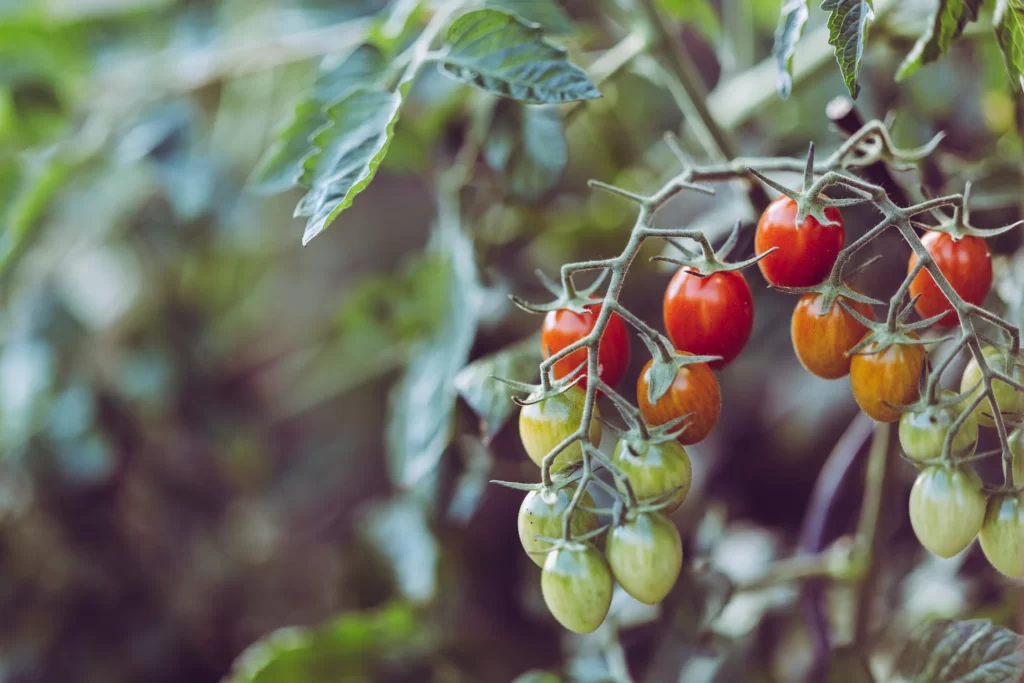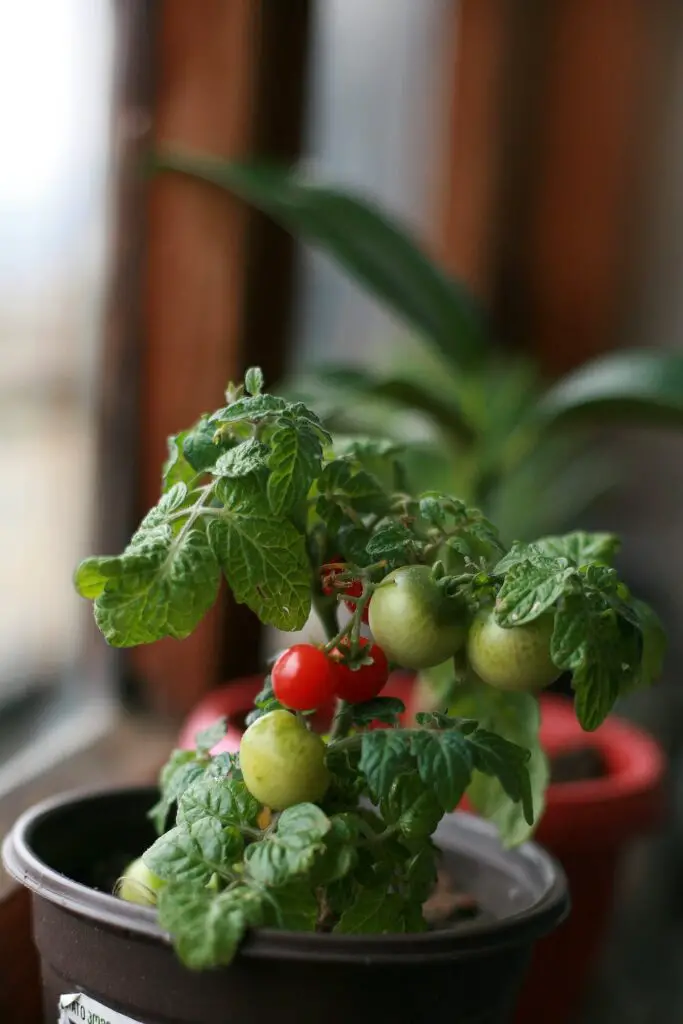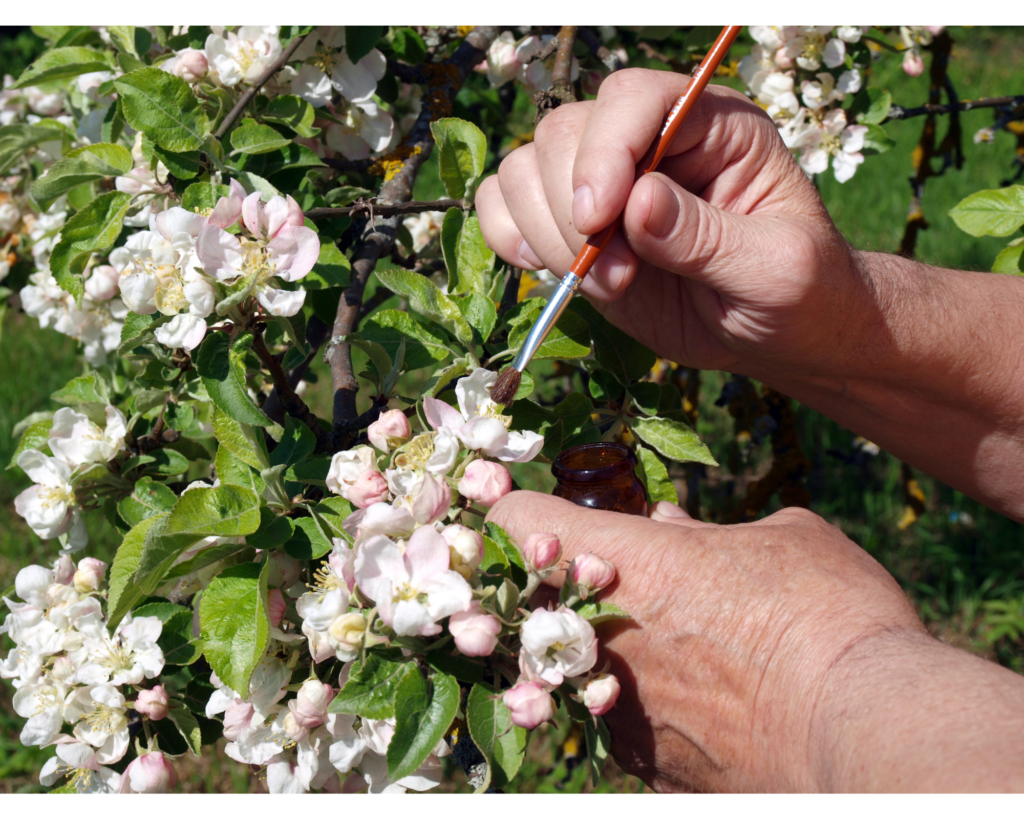Cherry tomatoes, with their sweet and vibrant flavours, are a delightful addition to any home garden. While traditional outdoor gardening is a popular method for cultivating these delectable fruits, growing cherry tomatoes indoors offers several benefits, such as year-round cultivation, controlled environments, and protection from external threats. In this article, we will provide a comprehensive guide to successfully growing cherry tomatoes indoors, from selecting the right varieties and suitable containers to optimizing lighting, temperature, and other essential factors for a bountiful harvest.
Table of Contents
Choose the Right Varieties
When growing cherry tomatoes indoors, it’s crucial to select tomato varieties that are well-suited for container gardening and indoor conditions. Compact or dwarf varieties are ideal choices as they don’t require extensive space to grow and produce smaller fruits that are perfect for snacking. Some popular indoor cherry tomato varieties include “Tiny Tim,” “Tumbling Tom,” “Balcony,” and “Micro Tom.”
Select Suitable Containers
Choosing the right containers is essential for successful indoor cherry tomato cultivation. Opt for large pots or containers with sufficient drainage holes to prevent waterlogging. Fabric grow bags and self-watering containers are excellent options as they allow air circulation and help maintain consistent moisture levels. Ensure that the chosen containers are sturdy enough to support the growth of the tomato plants.
Provide Adequate Light
Proper lighting is one of the most critical factors for growing cherry tomatoes indoors. Tomatoes are sunlight-loving plants, so it’s essential to ensure they receive enough light. Place your indoor garden near a south-facing window to maximize natural sunlight exposure. If sunlight is limited, supplement with artificial lighting using full-spectrum grow lights. Aim for 10-12 hours of light per day to encourage healthy growth and fruit production.
Maintain Optimal Temperature and Humidity
Cherry tomatoes thrive in warm and moderately humid conditions. Keep the indoor temperature between 65°F to 75°F (18°C to 24°C) during the day and slightly cooler at night. Avoid placing tomato plants near drafty windows or air conditioning vents, as temperature fluctuations can stress the plants. Maintaining proper humidity levels (around 50-70%) can be achieved by using a humidifier or placing a shallow tray of water near the plants.
Choose the Right Soil and Fertilise
Selecting the right soil is vital for healthy cherry tomato plants. Choose a well-draining, nutrient-rich potting mix with good aeration. Adding organic matter, such as compost or aged manure, can improve soil fertility and structure. Fertilise the plants with a balanced, water-soluble fertiliser every two weeks during the growing season to provide essential nutrients.
Pruning and Training
Pruning and training your cherry tomato plants indoors will promote better airflow, prevent overcrowding, and encourage fruit production. Pinch off suckers, the small shoots that grow in the crotch between the main stem and side branches, to focus the plant’s energy on fruit production. Use stakes or trellises to support the plants and train them to grow upward, maximising space and sunlight utilisation.
Watering Techniques
Consistent and appropriate watering is crucial for cherry tomato plants. The goal is to keep the soil evenly moist but not waterlogged. Check the moisture level by sticking your finger into the soil; water when the top inch (centimetres) feels dry. Avoid overhead watering, as it can increase the risk of fungal diseases. Instead, water directly at the base of the plant to keep the foliage dry.
Pest and Disease Management
Indoor cherry tomatoes are generally less susceptible to pests and diseases than outdoor plants, but it’s essential to remain vigilant. Regularly inspect the plants for signs of pests like aphids, spider mites, or whiteflies. Introduce beneficial insects or use organic pest control methods if an infestation occurs. Proper air circulation and spacing between plants can help reduce the risk of fungal diseases. If necessary, treat plants with organic fungicides to prevent or control diseases like powdery mildew or leaf spot.
Hand Pollination
Cherry tomatoes are self-pollinating plants, but indoors, natural pollinators may not always be present. To ensure proper fruit development, perform hand pollination. Gently shake the plant or use a small brush to transfer pollen from one flower to another.
Conclusion
Growing cherry tomatoes indoors can be a rewarding and fruitful experience. With the right varieties, containers, lighting, temperature, and care, you can enjoy a bountiful harvest of sweet and juicy cherry tomatoes all year round. Remember to select compact varieties, provide adequate light and humidity, and maintain proper watering and fertilising practices. With a little dedication and attention to detail, you can cultivate healthy and productive cherry tomato plants that will adorn your indoor garden and delight your taste buds with their delightful flavour. Happy gardening!



